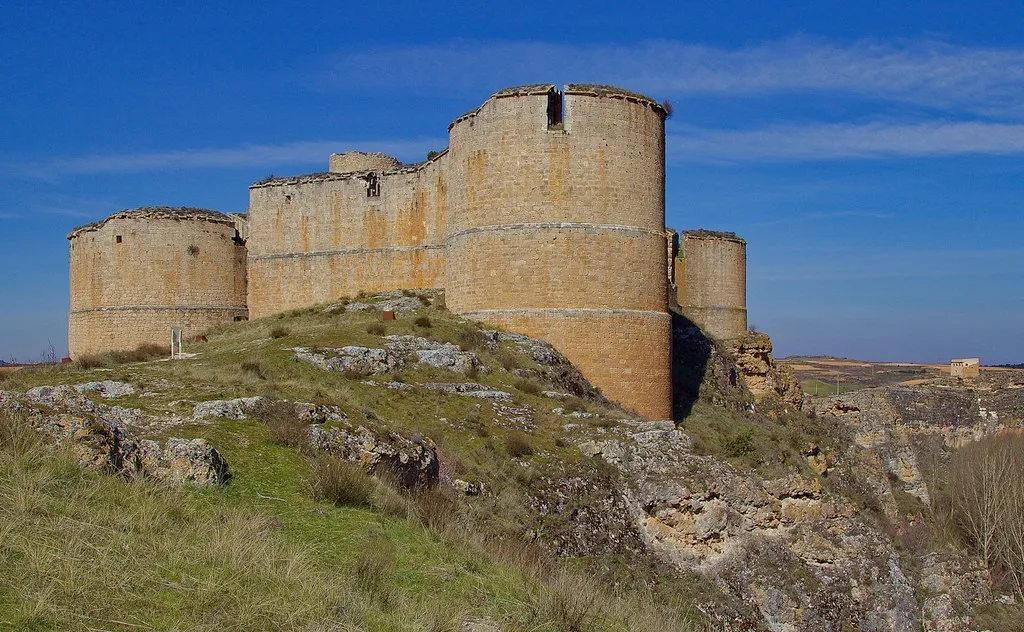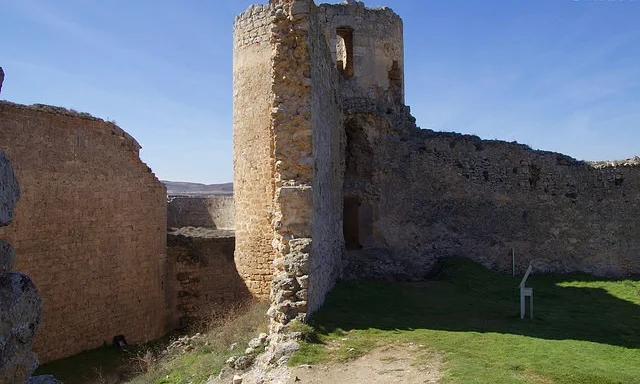Berlanga de Duero is one of the most impressive heritage sites in the province of Soria. The Villa, the Castle, the Rollo, the Collegiate Church, Manor Houses and Convents have been incorporated into the Catalog of Goods of Cultural Interest for their contribution to the historical and artistic values of this land and the country.
 |
| Berlanga de Duero Castle |
When we approach the town, a mighty castle towers over the hamlet. It is situated on a rocky rock and is the most representative symbol of the town. Fortified with thick walls, cubes and towers, it takes advantage of the cut that the Escalote River draws as a natural moat, on the northeast flank.
It originally belonged to the Tovar family, promoters of the construction of the town's collegiate church, and it had an important role, together with the wall that completely surrounded the town, in the defense of the Duero during the Middle Ages. Among the remains that are preserved of the castle, the tower of the tribute, wells, powerful circular towers in the corners and some tombs of the necropolis of the medieval town stand out.
 |
| Berlanga de Duero Castle |
This enclave appears for the first time in historical documentation in the year 975 within the framework of a campaign led by General Galib in support of the stronghold of Gormaz besieged by Castile.
The castle is located on the site of the original medieval town of Berlanga. With the passage of time, the inhabitants of Berlin occupied spaces outside the original fence. The Tovar family in the last decades of the s. XIV and until the beginning of the s. XVI took the enclosure under their ownership.
 |
| Berlanga de Duero Castle |
The remains that have survived to date present a double fortified enclosure that responds to two successive construction stages; the oldest medieval, the most recent renaissance. While waiting for the results produced by the intervention carried out in 2021, the data refer to the existence of a fortress of caliphal origin on the border between the medieval kingdoms of the peninsula. It is in the 20s of the s. XVI when Maria de Tovar began the construction of the new fortress around the medieval castle, in order to provide it with defenses against artillery attacks.
The second walled enclosure corresponds to a fence built around the medieval castle, built according to the Renaissance design that still enhances the protective character of the palace that will be erected at its feet. The walls were raised in lime and stone rammed earth topped by battlements; several semicircular cubes are distributed along the walls.
 |
| Berlanga de Duero Castle |
In the intramural space near the Renaissance Palace of the Dukes of Frías the ruins of a small temple that must have had Romanesque origin are preserved; the arch of glory is almost the only architectural element that remains standing.
The castle and the walls were declared a Monument on April 22, 1949.